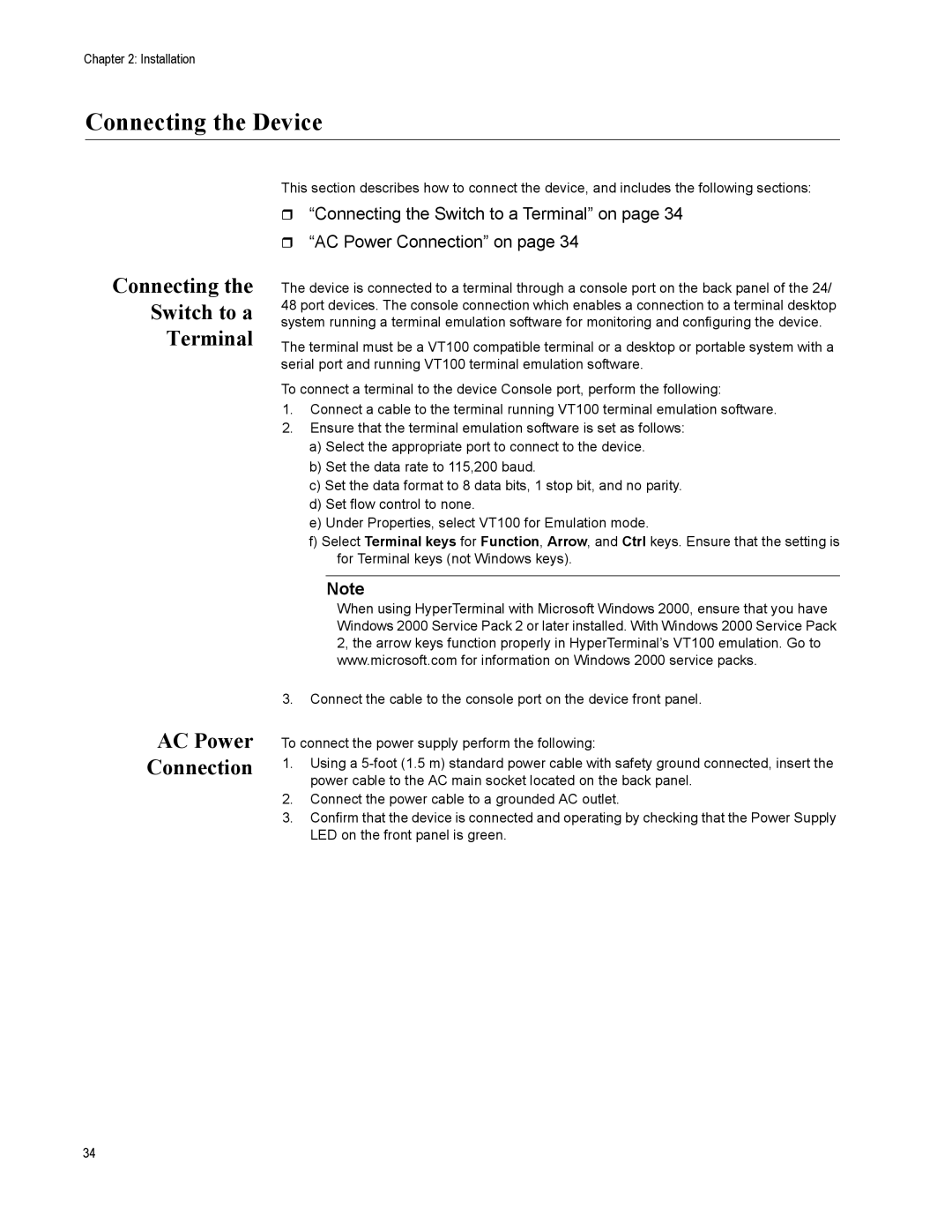
Chapter 2: Installation
Connecting the Device
Connecting the
Switch to a
Terminal
This section describes how to connect the device, and includes the following sections:
“Connecting the Switch to a Terminal” on page 34
“AC Power Connection” on page 34
The device is connected to a terminal through a console port on the back panel of the 24/ 48 port devices. The console connection which enables a connection to a terminal desktop system running a terminal emulation software for monitoring and configuring the device.
The terminal must be a VT100 compatible terminal or a desktop or portable system with a serial port and running VT100 terminal emulation software.
To connect a terminal to the device Console port, perform the following:
1.Connect a cable to the terminal running VT100 terminal emulation software.
2.Ensure that the terminal emulation software is set as follows:
a)Select the appropriate port to connect to the device.
b)Set the data rate to 115,200 baud.
c)Set the data format to 8 data bits, 1 stop bit, and no parity.
d)Set flow control to none.
e)Under Properties, select VT100 for Emulation mode.
f)Select Terminal keys for Function, Arrow, and Ctrl keys. Ensure that the setting is for Terminal keys (not Windows keys).
Note
AC Power Connection
When using HyperTerminal with Microsoft Windows 2000, ensure that you have Windows 2000 Service Pack 2 or later installed. With Windows 2000 Service Pack 2, the arrow keys function properly in HyperTerminal’s VT100 emulation. Go to www.microsoft.com for information on Windows 2000 service packs.
3.Connect the cable to the console port on the device front panel.
To connect the power supply perform the following:
1.Using a
2.Connect the power cable to a grounded AC outlet.
3.Confirm that the device is connected and operating by checking that the Power Supply LED on the front panel is green.
34
